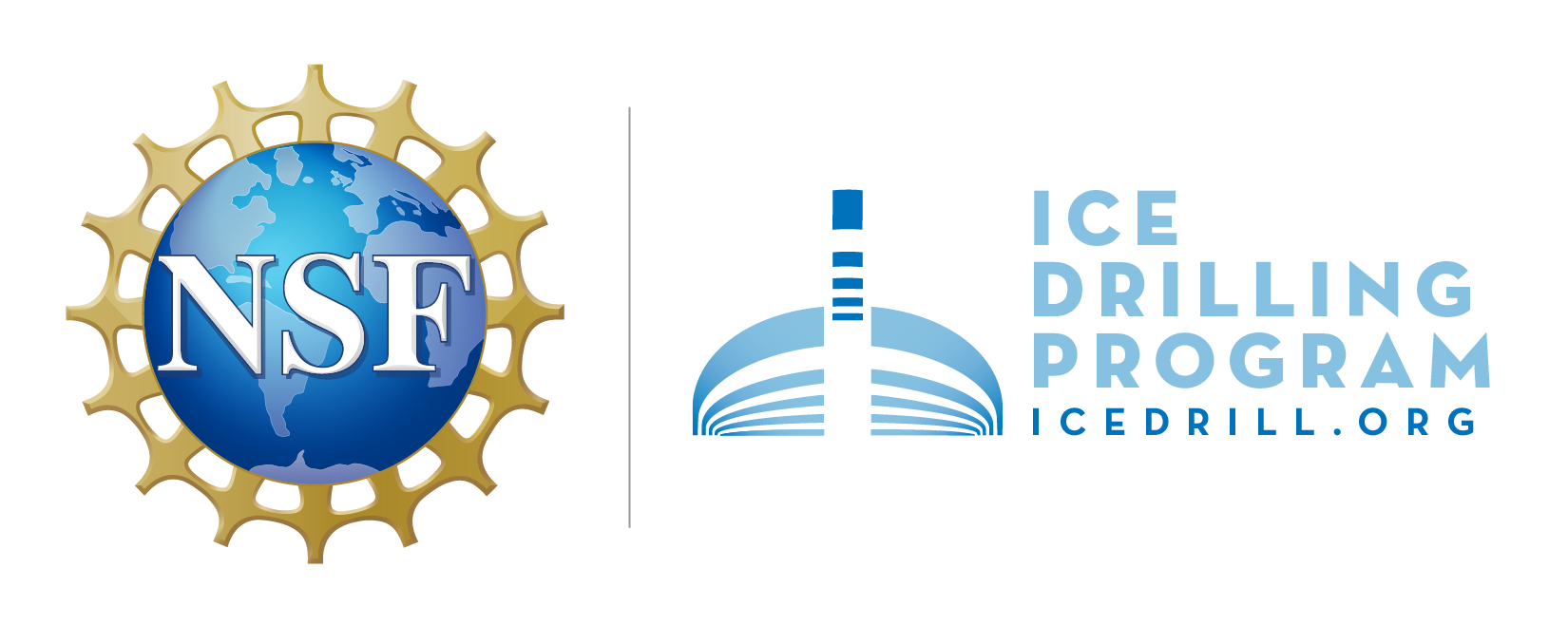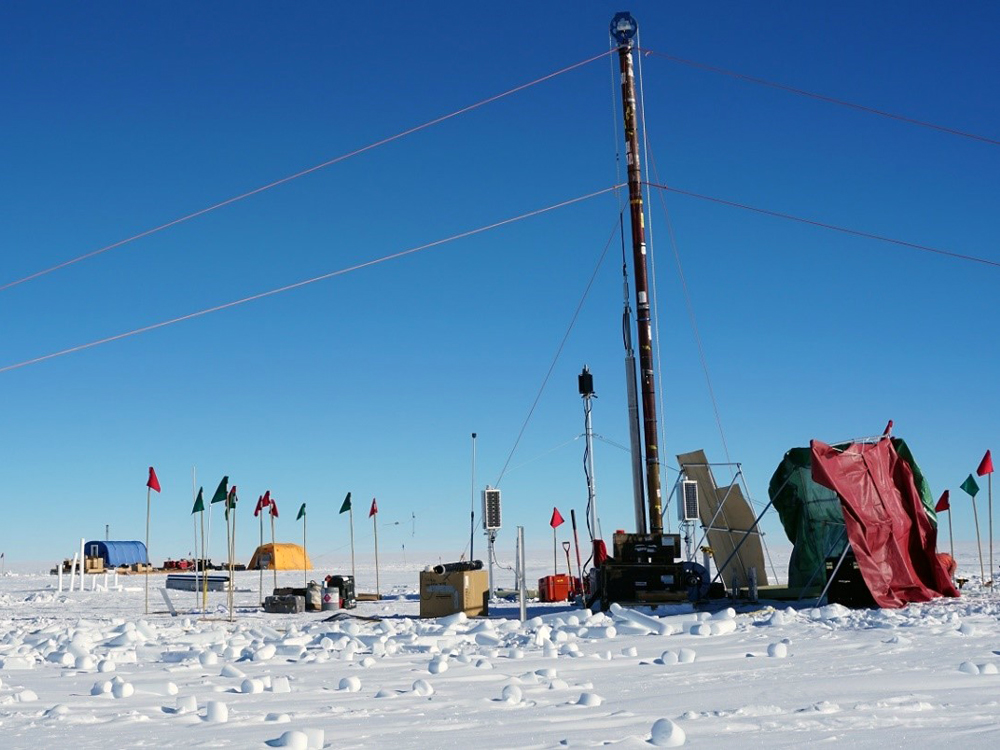In the first quarter, IDDO's Antarctic field efforts included the successful deployment of two new rock coring drills.
The Agile Sub-Ice Geological (ASIG) Drill was deployed to the Pirrit Hills (PI John Stone; I-277-M) by traverse from WAIS Divide in December. IDDO Drillers Tanner Kuhl, Mike Jayred and Clayton Armstrong recovered more than 7 meters of ice core and 8 meters of rock core at a depth of 150 meters. Development of the new drill system, which is based on a field-proven minerals exploration drill rig, was completed in PY 2016. The system is capable of coring rock below 700 meters of ice. IDDO will work during the upcoming summer to perform maintenance and upgrades on the system to ready it for future field work.
The Winkie Drill was deployed to the Ohio Range region (PI Sujoy Mukhopadhyay: G-438-M) in late November for its first funded field project. IDDO engineer Grant Boeckmann and the science team drilled a series of shallow boreholes that resulted in the successful collection of five rock core samples and one sample of frozen and largely unconsolidated debris. The Winkie Drill system functioned very well for its first official deployment. Refinements will be made when the equipment returns from Antarctica this spring.
The Antarctic Support Contract (ASC) team made significant contributions to the successes this season through exceptional efforts to expedite additional drill equipment to both sites during the season and to swiftly return the equipment to McMurdo Station to meet the cargo vessel returning to the U.S.


